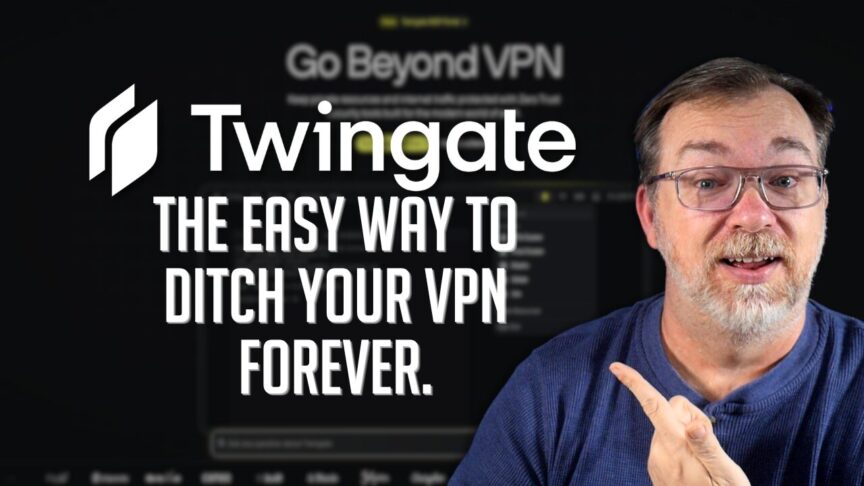Tired of the complexity and security concerns associated with traditional VPNs and port forwarding? You’re not alone. Many users are seeking a more efficient and secure way to access their home networks and self-hosted services from anywhere. Enter Twingate, a Zero Trust Network Access (ZTNA) solution designed to eliminate the vulnerabilities present in standard VPN setups. This article will delve into what Twingate is, how it works, and why it’s an essential tool for self-hosting enthusiasts.
What is Twingate?
Twingate redefines secure network access by focusing on verifying every user and device before granting access to any network resources. Unlike traditional VPNs that generally expose whole networks, Twingate employs a more granular approach—allowing only authorized users to access specific resources. This significantly reduces potential attack surfaces and enhances network security.
Main Components of Twingate
Twingate’s functionality operates through three core components:
- Controller: This cloud-hosted component manages users, devices, and access policies. It serves as the hub that enables secure connections.
- Connector: An application installed on your home server or any device within your network, acting as a secure gateway to your internal resources.
- Client: The app installed on your devices (smartphones, tablets, laptops) for connecting to your network remotely.
When users request access, the client communicates with the controller that establishes a secure, encrypted link through the connector—without exposing any open ports to the public internet.
Advantages Over Traditional VPNs
Self-hosting enthusiasts often encounter a range of services they want to access securely from remote locations without exposing them to the internet. Twingate stands out for several reasons:
- Reduced Risk: It prevents unauthorized access by controlling user permissions at a granular level.
- Ease of Use: Setting up Twingate is more straightforward than configuring complex VPNs or port forwarding.
- No Unnecessary Exposure: Resources remain hidden from the public unless you choose to allow access, minimizing attack vectors.
Practical Use Cases for Twingate
From media streaming to server management, Twingate opens up a range of possibilities for users while ensuring robust security. Here are some common applications for self-hosting:
- Media Servers: Whether it’s Plex or Jellyfin, Twingate allows users to stream their media libraries from anywhere without exposing server ports.
- Home Automation: Accessing systems like Home Assistant securely has never been easier, with minimal configuration required.
- File Management: Users can manage files on their network-attached storage devices securely without the risks associated with traditional access methods.
Step-by-Step Guide to Setting Up Twingate
Setting up Twingate requires minimal effort and is built to facilitate even those who are less tech-savvy. Here’s a straightforward guide to get you started:
- Create an Account: Visit Twingate.com and click on “Sign In”. Choose to create a new Twingate network and enter your email.
- Network Configuration: Give your network a name that will become part of your network’s URL.
- Resource Selection: Select specific resources you wish to access, such as subnets.
- Deploy Connector: Install the Twingate connector on your network—Docker is a common option, but other installation methods are available.
- Download Client Apps: Once the connector is deployed, download the appropriate client apps for remote access on your devices.
Ensuring Secure Access
Once you have your Twingate setup, ensure optimal security by managing access levels:
- User Management: Add users and create groups for different permissions, ensuring specific users only see what they need.
- Granular Policies: Twingate allows you to create and enforce policies on who can access which resources. For example, a policy could restrict access to particular users based on their device’s compliance with security standards.
Conclusion
With its powerful features, Twingate emerges as a groundbreaking tool for securing remote access to your home network and self-hosted services. Its zero-trust approach ensures that every access request is authenticated, substantially enhancing the security of your network. If you’re looking to simplify your home server access while bolstering security, Twingate is the solution you’ve been waiting for.
Ready to enhance your network security? Try Twingate today, and experience seamless remote access like never before!

